when in 1824, JMC becomes the fifth medical school in the U.S.
1824 The Past is a Prologue
Discover how Drs. George McClellan, John Eberle, and Joseph Klapp and Jacob Green broke the mold to establish Jefferson Medical College.
Jefferson’s 200-year history includes intrigue and innovation that started with $550 and a bold idea that would forever change medical education around the world. From medical pioneers and many medical firsts to productive mergers, Jefferson Medical College — now Sidney Kimmel Medical College at Thomas Jefferson University — continues to build on that history, boldly shaping the future of medicine and education.
Starting a new medical college is no small feat, especially at a time when there are only a few in the nation and market forces are out to stop anyone who tries. But four determined visionaries band together in 1824 with a plan to overcome these obstacles.
Discover how Drs. George McClellan, John Eberle, and Joseph Klapp and Jacob Green broke the mold to establish Jefferson Medical College.

when in 1824, JMC becomes the fifth medical school in the U.S.
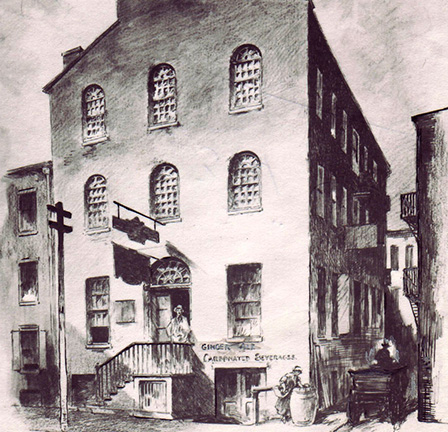
Think about what you can do with $550 today. That is what it costs to rent the Tivoli Theater for a full year and open the “Hall of the Jefferson Medical College”—aka Jefferson’s first Medical Hall. Located at 518-520 Prune St. (now Locust Walk, just east of Washington Square), the building is renovated for $100. An infirmary offered free medical and surgical care for outpatients, making it the first clinic established in any college in the country.
Samuel D. Gross receives his MD from JMC. Dr. Gross goes on to become a pioneer in combining clinical surgery, teaching and research in an academic setting; the founding president of the Jefferson Alumni Association in 1870; and founder of the American Surgical Association in 1880.
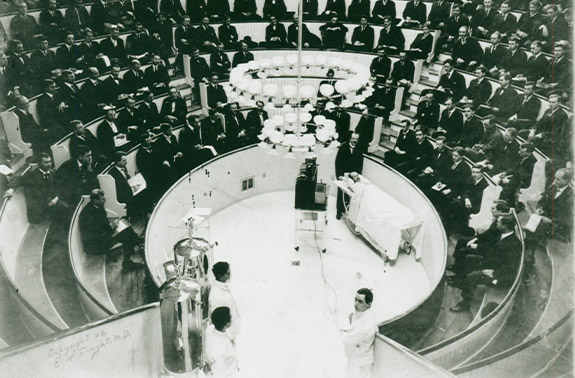
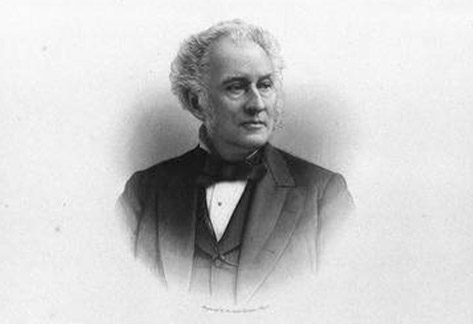
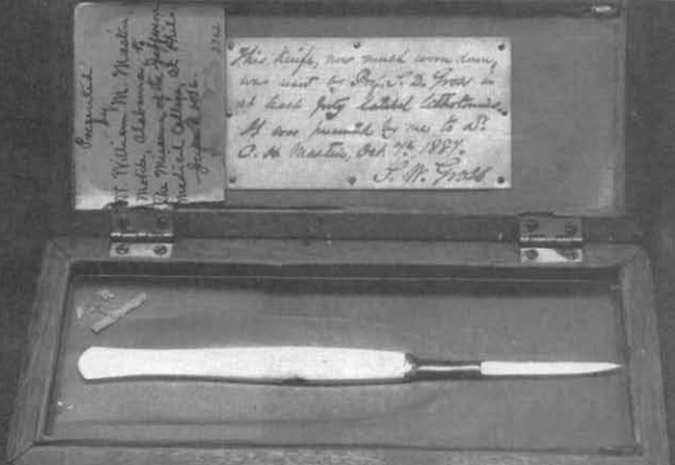
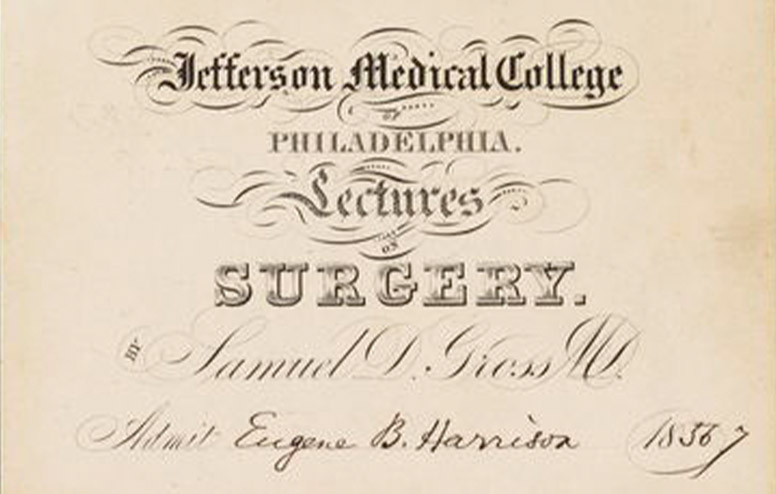
Dr. Gross is considered one of the finest surgeons of his time, and is undoubtedly the most venerated figure in Jefferson’s history. He was a distinguished educator who authored 14 highly influential books, including Elements of Pathological Anatomy and his two-volume A System of Surgery: Pathological, Diagnostic, Therapeutic and Operative, the latter of which had a profound effect on surgical thought around the world. It’s considered by many to be the greatest surgical treatise of its time.
He was also a Civil War surgeon and authored A Manual of Military Surgery, or, Hints on the Emergencies of Field, Camp and Hospital Practice, which became a standard field manual for Civil War surgeons. A prolific author, he also wrote over 1,200 articles while maintaining a thriving medical practice.
Robley Dunglison, MD, is appointed Chair of the Institutes of Medicine and Medical Jurisprudence. At one point in his career, he becomes the private physician to U.S. Presidents Thomas Jefferson, James Madison and James Monroe.
Dunglison authors a treatise on Human Physiology (1832), which establishes him as the "Father of American Physiology," and publishes a medical dictionary.
Dunglison is a pioneer in the publication of works on public health (or hygiene, as he called it), materia medica and therapeutics, medical jurisprudence and toxicology.
Dunglison served as Dean of JMC, and helps to firmly establish Jefferson Medical College as a great institution.

served as a faculty member at Jefferson in the 1800s and was the grandson of Benjamin Franklin.
Being the first to accomplish new feats becomes a hallmark of Jefferson Medical College during this era. From surgical firsts, pioneering new fields of medicine, ambulatory care and more, great progress is made to improve lives.

in 1859, making the Jefferson Medical College the most well-attended medical school in the world.

The Jewish Hospital for the Aged, Infirmed and Destitute opens. In 1952, the hospital merges with Northern Liberties Hospital and Mount Sinai Hospital to form the Albert Einstein Medical Center.

The world's first moving pictures are caught on camera. Twelve cameras are used, each taking one picture with the goal of seeing if all four of a horse’s hooves leave the ground.
In starting one of the most prestigious medical associations in the country, performing groundbreaking surgeries, making significant discoveries or expanding training beyond doctors and medicine, this era at Jefferson has long-lasting impact.

Samuel D. Gross, MD 1828, establishes the American Surgical Association, the nation's oldest and most prestigious surgical organization.
Jefferson continues building its reputation as visionary pioneers with groundbreaking discoveries and surgeries.
In 1881, Carlos Juan Finlay, MD 1855, publishes proof the mosquito is the vector for yellow fever transmission, while William Thomson, MD 1853, invents a standard test for color blindness.
In 1884, Phineas S. Connor, MD 1861, performs the first complete gastrectomy on a human.
In 1884, Jacob DaSilva Solis-Cohen, MD, professor of laryngoscopy, performs the first complete laryngectomy in the U.S.

invents a grooved glass jar known as the Coplin jar. This jar allows microscopic slides to stand separated in a staining solution. He also realizes the need to have hospital-based laboratories and is instrumental in establishing them in Philadelphia.
Seeds for Jefferson’s future are planted with a new medical care facility opening, as well as a change in operational structure and status of the college.
Methodist Episcopal Hospital opens in South Philadelphia. In 1961, it becomes Methodist Hospital. Later, in 1996, it merges with Jefferson Health.
Jefferson Medical College gains nonprofit status, with a single Board of Trustees to manage the Hospital and the College.
in 1896. Over the next decade, rivals included Princeton, Maryland Medical College, Fordham and local teams: University of Pennsylvania, Haverford, Swarthmore, Ursinus and Philadelphia Dental College.
Throughout the beginning of the 20th century, Jefferson continues to make advancements at the forefront of medicine. We innovate with surgical firsts, create new inventions and take the first steps toward offering graduate studies programs.

Becomes the first African American graduate of Jefferson Medical College. He goes on to co-found the first African American fraternity, Sigma Pi Phi, also known as The Boulé. It creates opportunities for other Black physicians and continues to do so today.
Jefferson continues to open new hospitals and clinics, providing more healthcare options and improving lives for the expanding community.
The Frankford Hospital, now Jefferson Frankford Hospital, opens to serve as a community hospital for the area of Northeast Philadelphia.
The Abington Memorial Hospital opens, and is still providing care as a 665-bed regional referral center and teaching hospital in Abington, Pa.
James Alexander Clarke, Jr., MD ’16, opens and establishes the first allergy clinic in Philadelphia.

Jefferson alumni include two royals: Prince Nasib Janblatte of Syria (1906) and his son, Albert Faud Jumblatt (1924).
The Women's Auxiliary of the Jefferson Hospital group is started. Today, the Auxiliaries are an active and strong support group for the Women’s Board and hospital. With 200+ members of all ages, backgrounds and interests, they make vital contributions to fundraising, volunteering and public relations, raising over $60,000 each year to benefit Jefferson Abington Hospital, including targeted giving programs.

The boards of the Medical School of the University of Pennsylvania and the Jefferson Medical College vote to merge. Later that summer, the institutions decide against the merger.
Samuel Parsons Scott bequeaths the bulk of his estate, which was valued around $3 million (in pre-Depression dollars) to Jefferson. This is for the foundation and creation of the Scott Memorial Library. Mr. Scott made the bequest in grateful acknowledgement of the service rendered him by an unknown Jefferson physician who relieved him of hay fever.
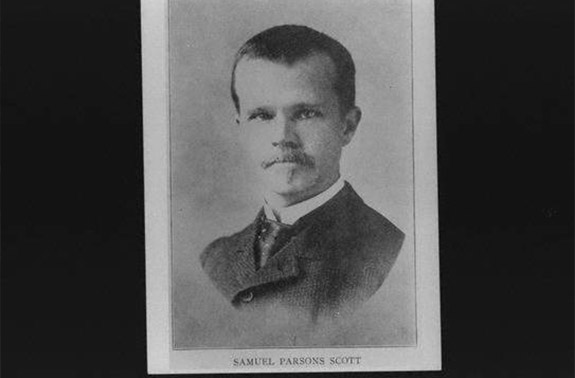
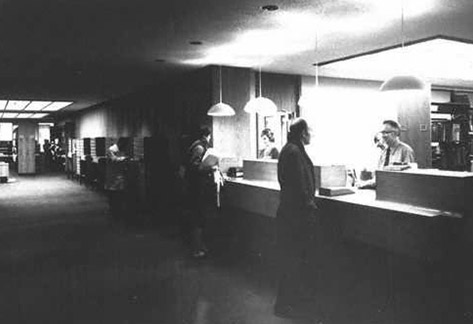
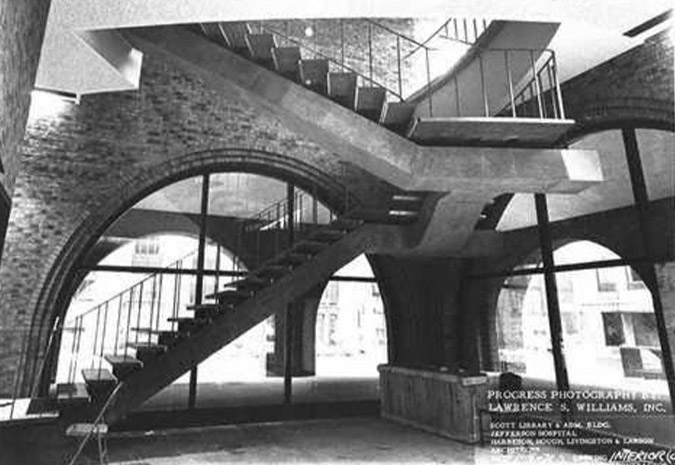
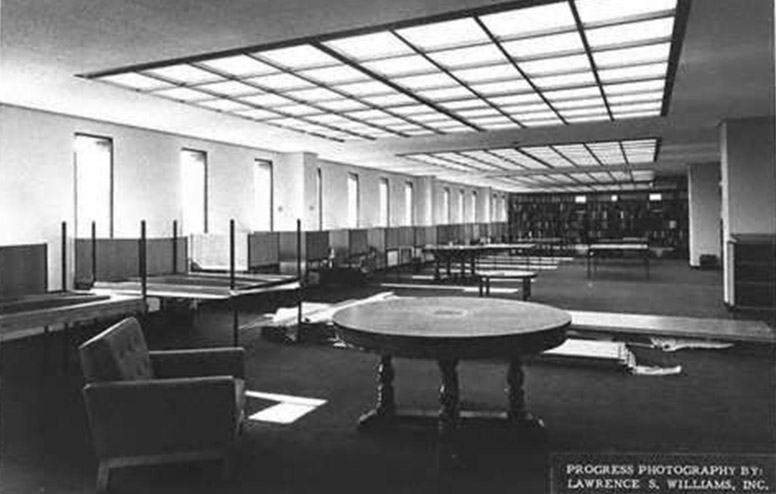
In an era that includes World War II, the polio vaccine and the discovery of the double helix structure in DNA, Jefferson makes its own marks on the world in cardiothoracic surgery, obstetrics, plastic surgery and more.
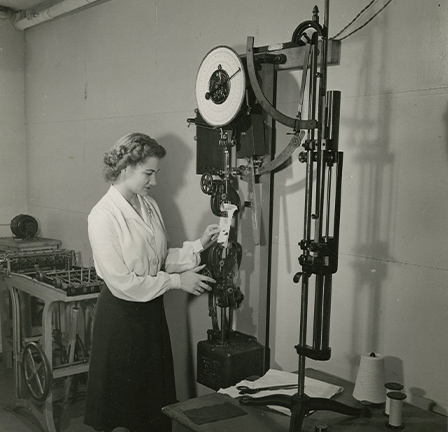
Philadelphia Textile School undergoes a name change to Philadelphia Textile Institute and is licensed to award bachelor’s degrees. The 1948 Analysis shows that approximately 70% of graduates that year were pursuing degrees or diplomas in “Textiles,” the rest in “Chemistry, Dyeing & Printing.”

a graduate program in various basic medical sciences is organized. This later leads to the formation of the College of Graduate Studies. Today, Thomas Jefferson University has over 200 graduate programs in fields such as architecture, business, design, engineering, fashion and textiles, health medicine, nursing, science and social science.
Constant evolution and innovation of medical instruments and surgical techniques fuel Jefferson's role as a leader in the field of medicine and education.
In 1932, Samuel M. Dodek, MD ’27, invents the hysterograph, or tocodynamometer, the first device to accurately measure uterine contractions during labor.
In 1945, plastic surgeon John D. Reese, MD ’25, invents the Reese Dermatome, a major advance in burn treatment therapy. A more precise instrument, skin cut thickness is determined by shims inserted with the blade to determine graft thickness.
In 1954, William L. Glenn, MD ’38, creates the Glenn shunt, a vena cava-pulmonary artery shunt to improve blood flow to the lungs in complex conditions.
The new hospital, in 1955, offers novel “hotel-like” room accommodations and state-of-the-art medical facilities. It was named for the family of longtime Jefferson trustee Percival E. Foerderer and his wife, and Women’s Board president, Ethel.
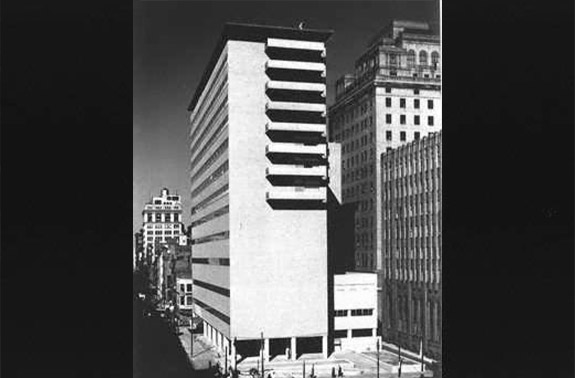
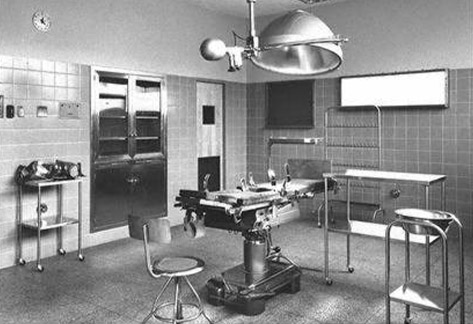
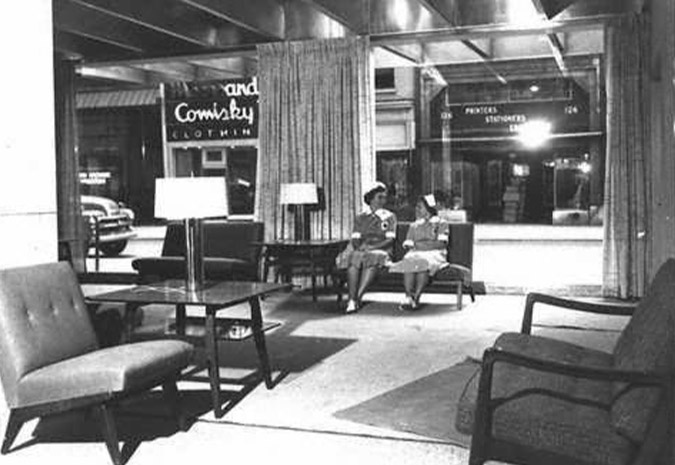
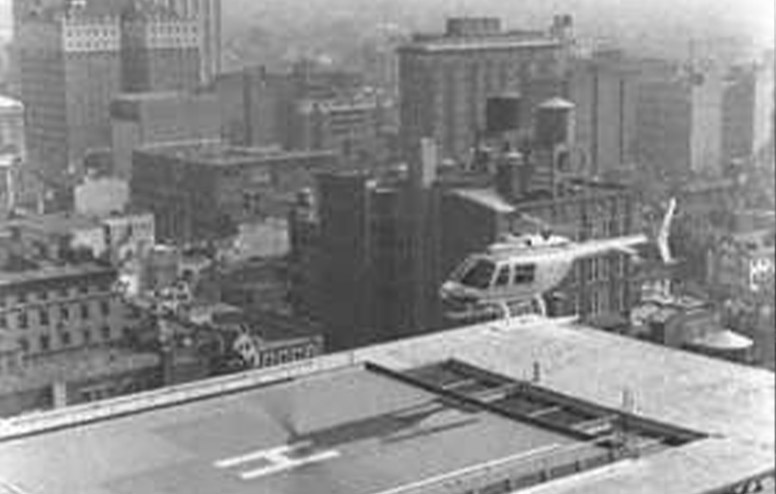
In an era associated with social progress, women earn a place in the academic halls of Jefferson. Meanwhile, Jefferson’s campus expands with new buildings, and great progress is made in the renal field.
Jefferson alumni improve post-operative care, establish new laboratory facilities and perform impressive medical feats through collaboration — including with Philadelphia Textile Institute.
Pioneering anesthesiologist Jay J. Jacoby, MD, creates the “Code Blue” alert and post-op intensive care unit.
Professor of Radiology Barry B. Goldberg, MD, establishes the first accredited vascular laboratory in the U.S. He is known as a pioneer in ultrasound technologies.
James M. Hunter, MD ’53, invents the artificial tendon for hand rehabilitation in collaboration with faculty at Philadelphia Textile Institute.
John F. Kennedy Memorial Hospital is established. Opening as a single, 99-bed facility, it would become the multi-hospital Kennedy Health System, now part of Jefferson Health.

Jefferson introduces a training program in clinical pharmacology and clinical research. The program includes hands-on experience in clinical research and human clinical trials.
A time of great growth, Jefferson opens Jefferson Alumni Hall in 1968, the Scott Administration Building and Library in 1970, the first helicopter airlift program in the Delaware Valley in 1971 and the Gibbon Building in 1978.
Along with a new college comes a new name. In 1967, the College of Allied Health Sciences, now the Jefferson College of Health Professions, is established. In 1969, Jefferson is granted university status and becomes Thomas Jefferson University.
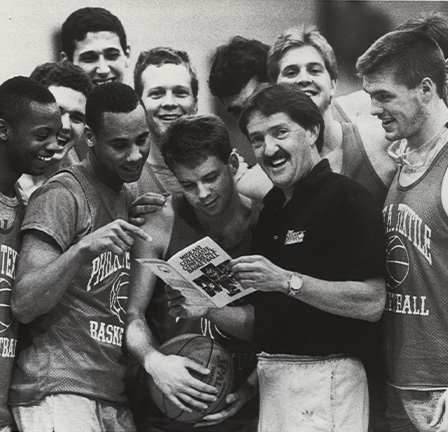
In Coach Herb Magee’s third season as the Rams’ head basketball coach in 1970, Philadelphia College of Textiles & Science wins the school’s first NCAA College Division National Championship. In all, the team has reached the NCAA Tournament 37 times.
From the Sony Walkman to CD players, to the first PCs and the internet, this era sees giant leaps from an analog world to a digital one. Jefferson also takes giant leaps with a wealth of discoveries and expansion.
The 1980s brings us personal computers, camcorders, MTV and disposable cameras, to name a few. Jefferson alumni also bring some of that ‘80s ingenuity into the medical field.
Professor of otolaryngology Louis D. Lowry, MD, designs an artificial larynx to activate speech using lips and tongue motion.
Charles Klieman, MD ’67, develops the modern surgical stapler.
Dr. Klieman invents again and devises the first articulating laparoscopic instrument – scissors that allow surgeons to choose a precise angle of cut.
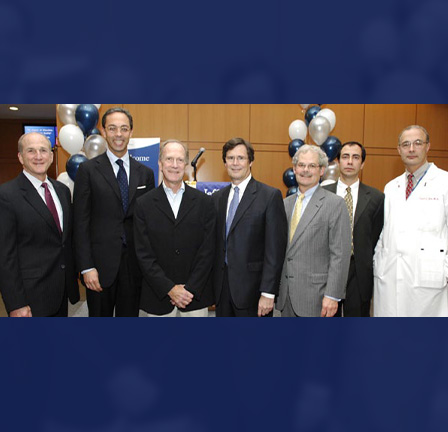
In 1984, the first successful liver transplant in the Delaware Valley is performed at Jefferson. Between 1984 and 2016, 1,000 liver transplants are performed.
In 1991, the Sidney Kimmel Cancer Center is established thanks to a groundbreaking gift from the Sidney Kimmel Foundation. By 1996, the Sidney Kimmel Cancer Center receives National Cancer Institute (NCI) designation.

The School of Architecture is added to Philadelphia College of Textiles & Science in 1991, and by 1999, the College receives university status and changes its name to Philadelphia University.
A period of dazzling technological growth, where the world in some ways becomes more connected than ever. Jefferson grows quickly through several strategic mergers, offering many new areas of study and reimagining education. During a years-long global pandemic, Jefferson leads the way while remaining resilient and at the forefront of innovative care.

have been awarded by Jefferson Medical College, now Sidney Kimmel Medical College, which has more living graduates than any other medical college in the U.S.
New buildings and programs are established, broadening Jefferson’s mission, vision and reach into the community. In 2007, the Dorrance H. Hamilton Building opens at the heart of Jefferson’s academic community. It is designed to educate and promote a team-based, patient-focused model of care for doctors, nurses, health care professionals and scientists who will define the future of patient-focused care.
That same year, the Jefferson Center for Interprofessional Practice and Education (JCIPE) is established. JCIPE’s mission is “to generate and sustain an adaptive ‘living laboratory’ for innovative interprofessional practice and education that improves the lives of patients and populations.”
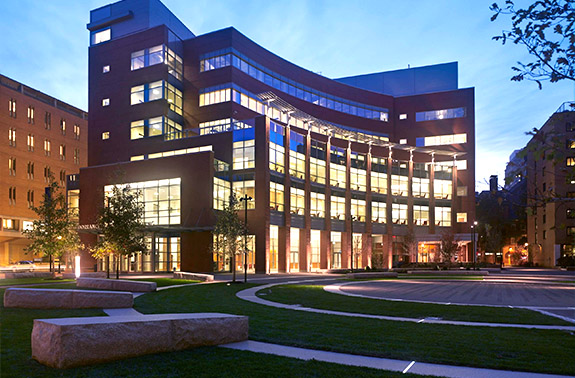
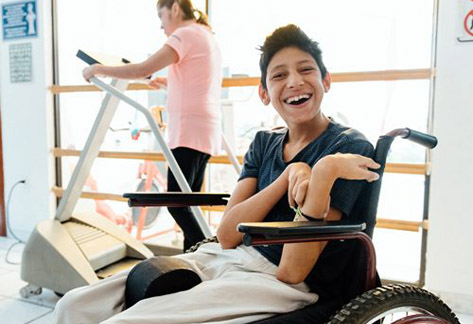
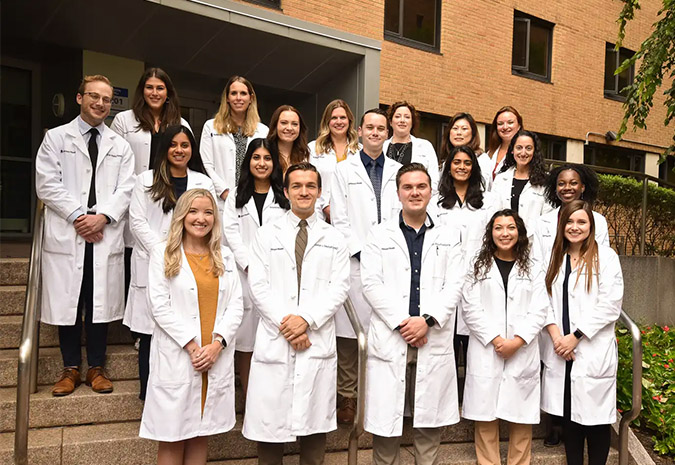
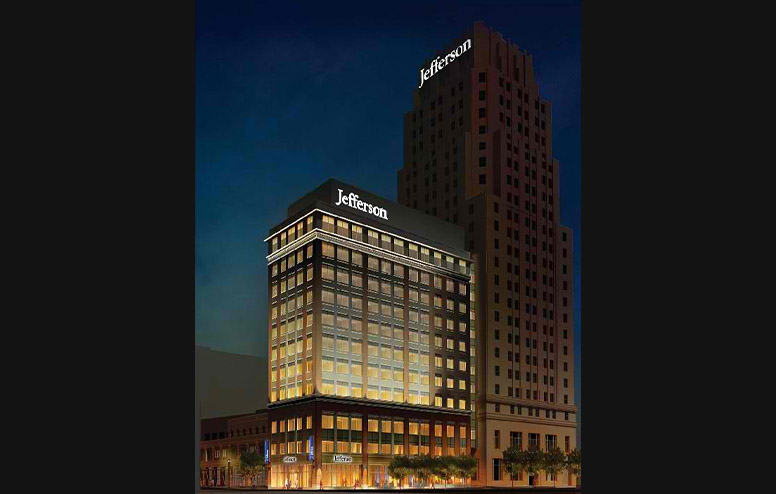
In 2008, the Jefferson College of Pharmacy is established. The College of Population Health is also established as the result of a multi-year strategic planning process that identified health policy and population health as immediate priorities crucial to Jefferson as a healthcare leader in the 21st century.
Then in 2012, 901 Walnut opens to accommodate University expansion. The 11-story, 85,600-square-foot, state-of-the-art high-rise is home to Jefferson's colleges of Nursing, Pharmacy, Health Professions and Population Health; the departments of Occupational and Physical Therapy, and Radiologic Sciences; and the Jefferson Clinical Neuroscience Center.
Later in 2016, the Jefferson College of Rehabilitation Sciences is established. This college includes occupational therapy, physical therapy, speech-language pathology, athletic training and exercise science.
Coach Magee, who became the “winningest coach” in NCAA men’s basketball history in 2010, is inducted into the Naismith Memorial Basketball Hall of Fame in 2011. His induction class includes former St. John’s men’s basketball head coach and former NBA player Chris Mullin, Stanford women’s basketball head coach Tara VanDerveer, former Kansas State head coach Tex Winter and former NBA players Dennis Rodman and Arvydas Sabonis.
My heart has always been in Philadelphia and Jefferson is the soul of this city.
A series of strategic mergers take place from 2015-2021. The goal is to provide better care and opportunities for improving the health of the communities we serve, and broadening our educational offerings. At this point, Jefferson is 42,000 people strong with a shared vision of reimagining health, education and discovery to create unparalleled value.
Jefferson Health merges with Abington Health in 2015 and with Aria Health in 2016.
In 2017, Philadelphia University merges with TJU to become a professions-based, national doctoral research university. That same year, Kennedy Health of New Jersey merges with Jefferson Health. The following year, Magee Rehabilitation also merges with Jefferson Health.
Einstein Healthcare Network merges with Jefferson Health. Jefferson Health also merges with Health Partners Plans, which is a health maintenance organization that provides CHIP, Medicare Advantage and Dual Eligible Special Needs plans, and a nationally recognized Medicaid plan.
In addition to celebrating Jefferson’s Bicentennial, the state-of-the-art, patient-focused Honickman Center will open. Designed for and by patients, it is an innovative, multi-specialty outpatient care center that makes the most of each patient’s healthcare experience. It will offer greater accessibility for patients who need additional support, on-site valet parking and care services like a retail pharmacy, lab services, radiology and more to support over a dozen medical specialties—all in one convenient location.
We’ve designed the Honickman Center to make patient care convenient and have planned for many patients’ needs by:
incorporating virtual check-in kiosks
assigning patient ambassadors to answer questions
designing exam rooms that improve accessibility for patients who need additional support
creating quiet spaces with sensory furniture for patients with neurodiverse conditions
offering pet friendly areas to make patients with service animals feel welcome
planning for future expansion as technologies advance
interactive exam rooms
infusion chairs
operating rooms
Making an impact from the skyline to the sidewalk, the Honickman Center will feature several carefully crafted details to make all visitors feel welcome and comfortable. (Credit: Neoscape, Inc.)


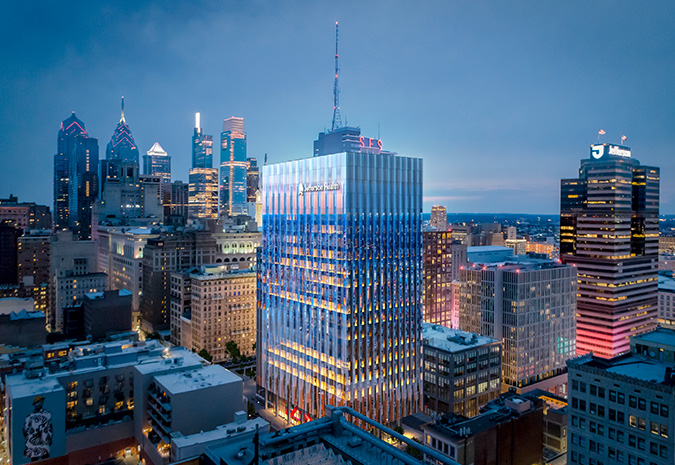

The forward-thinking facility redefines health care with its patient-centered design. Opening in 2024, the Center is located at the epicenter of a $1 billion+ urban development project in East Market.
Jefferson’s rich history, visionary alumni and growing reach in the community have not only transformed the city of Philadelphia, but also impacted the entire world. Today, Jefferson has garnered national and international recognition, and we stand as a window into what education, health care and research will look like in the future. Our underpinning of a Nexus Learning curriculum means just the right blend of theory and hands-on learning to improve the future for all of our students—tomorrow’s national and international leaders in architecture, business, design, engineering, fashion and textiles, health, medicine, nursing, science and social science.
This approach provides students with a proven competitive advantage in a rapidly changing world—as demonstrated by an important fact: 96% of our undergraduates are employed, enrolled in a graduate program or are completing military service. They join more than 76,000 alumni committed to changing the world.
Join the celebration at a Bicentennial event
Help us create a brighter future through service
Transform the future of health care, education and research